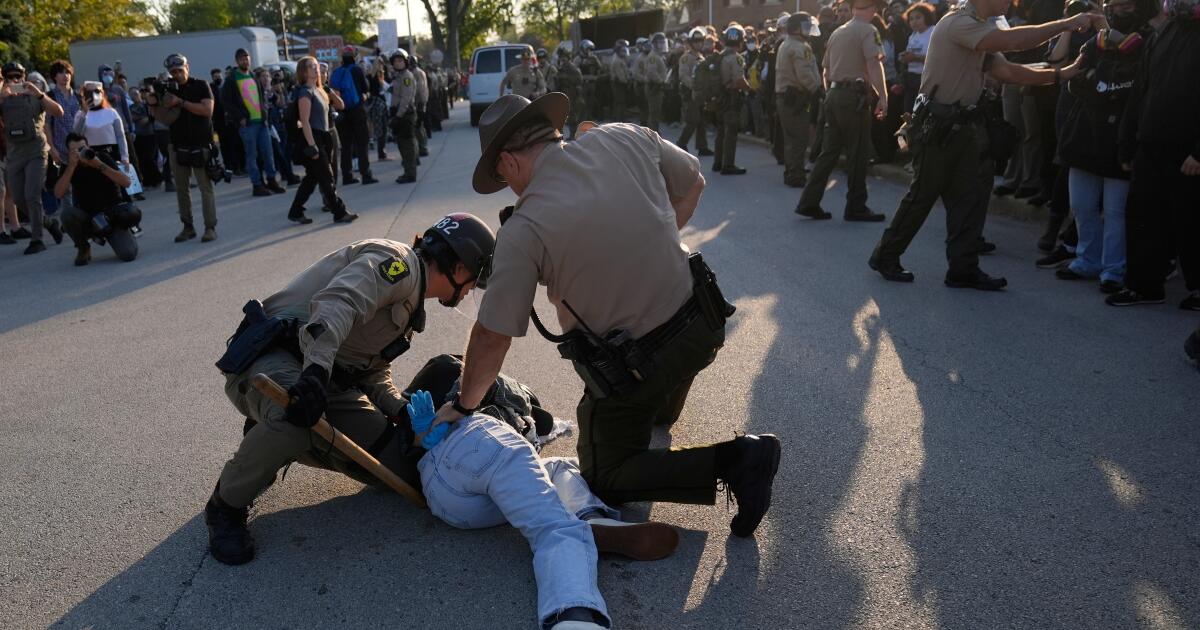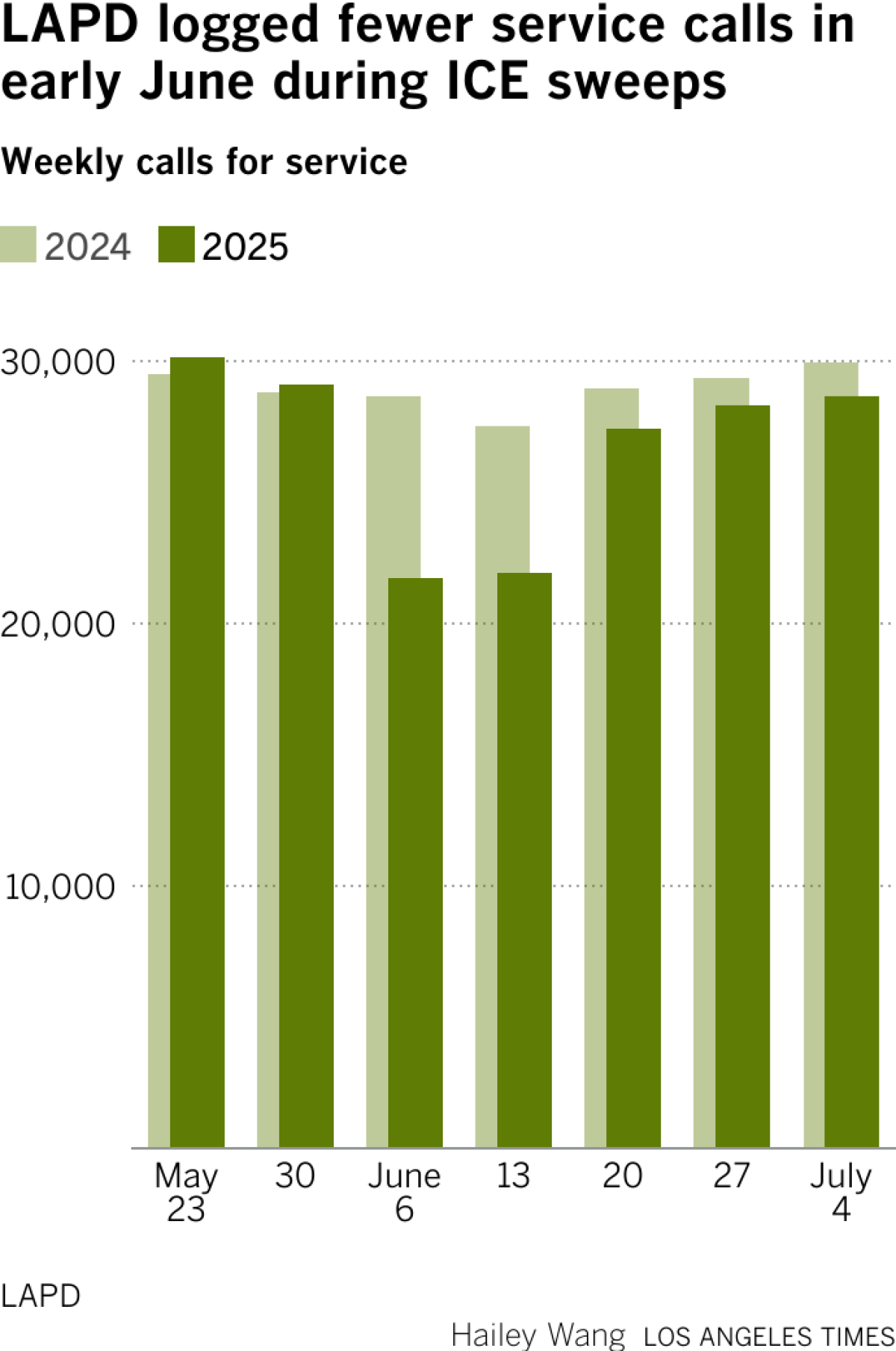Protesters at ICE facility object to barricades, agents detain multiple people
BROADVIEW, Ill. — Federal agents detained multiple people Friday near an immigration facility outside Chicago that has frequently been targeted by protesters during President Trump’s administration’s surge of immigration enforcement this fall.
A crowd grew over several hours, some riled by newly installed barricades to separate them from law enforcement officers stationed outside the U.S. Immigration and Customs Enforcement processing facility in Broadview, about 12 miles (19 kilometers) west of Chicago.
Some protesters have aimed to block vehicles from going in or out of the area in recent weeks, part of growing pushback to a surge of immigration enforcement that begin in early September. Federal agents have repeatedly fired tear gas, pepper balls and other projectiles toward crowds and at least five people have faced federal charges after being arrested in those clashes.
Local law enforcement stepped up their own presence Friday, closing several streets around the facility and putting Illinois State Police officers wearing riot helmets and holding batons on patrol. The state police set up concrete barriers Thursday night to segregate protesters and designate spaces to demonstrate.
It was unclear how many people were detained Friday. One man was seen struggling on the ground with agents after he appeared to break through a line into the roadway and in front of a vehicle.
Mostly reporters and a handful of protesters stood within the designated protest zone in front of the ICE facility as helicopters hovered overhead.
“Every week, ICE escalates its violence against us,” said Demi Palecek, a military veteran and candidate for Congress. “With this level of escalation, it’s only a matter of time before someone is killed.”
Several demonstrators said they were frustrated by the designated protest zone, saying keeping them off public streets violated their First Amendment right to free speech. Others were angered by officers from local or state agencies standing shoulder-to-shoulder with federal officers, including Homeland Security Investigations, ICE, the Bureau of Prisons and others.
Most ignored the zone to protest on the other side of the facility, where Illinois State Police officers held them back.
Jonny Bishop, a 28-year-old former teacher from Palatine, Illinois, said attempting to designate a “free speech zone” infringes on protesters’ First Amendment rights.
“As the day went on, we were progressively pushed, not just by ICE but also by Broadview Police Department,” he said. “We’ve done these things peacefully…But our rights are being violated.”
Bishop, from a Mexican immigrant family, said he has been hit by tear gas and pepper balls at previous protests. He said the main contrast between Friday’s protests and earlier efforts is local, county and state law enforcement agencies working alongside federal agents.
“ICE acts with impunity,” he said. “They know that they can shoot at us. They can tear gas us. And Broadview Police Department is not going to do anything.”
At one point, state police officers joined Border Patrol in advancing toward protesters, forming a larger perimeter around the building. Some protesters yelled in law enforcement officers’ faces while the officers grabbed them by the shoulders and pushed them back.
Fernando and O’Connor write for the Associated Press. O’Connor reported from Springfield, Ill. AP journalists Erin Hooley and Laura Bargfeld contributed to this report.

